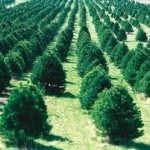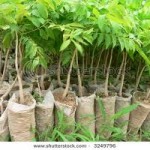The fast dwindling forest resources around our midst and high demand for wood in the market makes tree farming a lucrative livelihood for farmers to venture with.
Contour farming of trees is one way of utilizing a sloping or a rolling terrain of an agricultural land to the maximum rather than leaving it unproductively for the bushes and unwanted plants to grow and proliferate with it.
Forest trees may be propagated in sloping areas with the traditional spacing of 3 meters by 3 meters maintained. Contour spacing may be widened to accommodate intercropping like kakawate or ipil-ipil for livestock forage.
For effective prevention of soil erosion, tree farmers should check and retard rainwater runoff. Tree farming is not simply planting trees and leaving the trees to establish by themselves, especially in rough terrain with degraded soil. The new tree plantation may be surviving but hardly growing.
Tree farming is now becoming a lucrative investment option to make money by tree farmers. To maximize their income, contour farming for trees in sloping area is most ideal to adopt.
Good lumber prices interest farmers in tree planting and the availability of forest tree seedlings distributed by the government agency, the Department of Environment and Natural Resources (DENR) and its support have motivated them most.
In contour tree planting, hedgerows of kakawate may be intercropped with the tree seedlings as long it is pruned every 2 to 3 months to avoid shading them from the sunlight.
Pruned twigs of kakawate are piled along the contour to reinforce erosion barriers. These barriers increase with time as they entrap more topsoil which provide nutrient to the trees together with decomposing kakawate leaves.
The intercropped hedgerows which may also include ipil ipil are a good source of fodder of livestock. The forest tree plantation must be fertilized at least twice a year for two years.
Fertilizer increases root development necessary to absorb soil moisture during the first and second dry season. Unfertilized seedlings with shorter taproot and fewer root hairs may not be able to survive during the dry season.
The trees once they have grown up, they must also be pruned regularly to hasten height growth and develop good form and wood quality.

